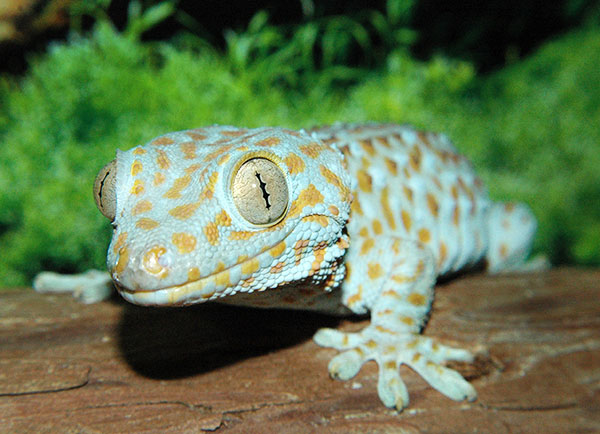Art imitates life. So, too, does nature-inspired design, called biomimicry — an emerging field in which Northeast Ohio and The University of Akron are positioned to be global leaders.
Biomimicry, a way of applying the time-tested lessons of nature to develop better products, processes and policies, is the topic of this month’s Akron Roundtable luncheon at noon Thursday, Feb. 19, on the UA campus. Details are at akronroundtable.org.
By mimicking structures in the biological world, researchers have improved designs for aircraft, electronic displays, steel pipe and other products.
Innovative studies
The University of Akron, where research has included the study of geckos’ feet to develop a super-strong dry adhesive, is on the leading edge of biomimicry education. In 2012 the University launched the Biomimicry Research and Innovation Center Initiative and introduced five-year fellowships to train Integrated Bioscience doctoral students in biomimicry.

A prime example of biomimicry is the study of geckos’ feet to develop a super-strong dry adhesive.
“In the United States, we are uniquely capable of training Ph.D.s in the area of biomimicry,” said Peter Niewiarowski, Ph.D., an evolutionary biologist who is director of biomimicry fellowships and a collaborator on the gecko research. Niewiarowski will take part in a panel discussion of biomimicry at the Roundtable luncheon.
UA’s fellowships aren’t geared only toward scientifically inclined students. The idea, Niewiarowski said, is to connect biology with any other discipline – including design, nursing, the arts – to which biomimicry can add value.
Many opportunities for students
UA fellows study biology, but also design, engineering, business and entrepreneurship in a way that is individually tailored to each student. Through a partnership with the five-year-old Great Lakes Biomimicry Collaborative, UA embeds its fellows at sponsoring companies and in K-12 schools as part of their training. GLBio, as the organization based in Lorain County is known, gets support from dozens of area businesses and institutions.
This network of relationships has created “a kind of biomimicry research and education ecosystem in the region,” Niewiarowski said. That means UA’s fellows are connected to “the innovation landscape” of the participating companies. Research leading to new products and services could play a part in regional economic development.
A thriving regional biomimicry infrastructure that teaches skills and creates opportunities is something that others can’t swoop in to buy and steal away, Niewiarowski said. But it could be something that attracts talent and investment to Northeast Ohio. That’s where GLBio comes in, serving as a facilitator between the academic and business partners.
“We’re going to grow the local economy around something that’s not only a source of innovation,” Niewiarowski said, “but it’s also sustainable innovation.”
UA has six Ph.D. candidates partway through their five-year biomimicry fellowships.
They are sponsored by Parker Hannifin, Sherwin-Williams, GOJO Industries, Ross Environmental Services, Nord Family Foundation and GAR Foundation. Nine new fellows will join them in the fall, along with new sponsors Goodyear, Lubrizol, Bendix Commercial Vehicle Systems, Nottingham Spirk, Cleveland Metroparks Zoo and Cleveland Foundation.
Media contact: Roger Mezger, 330-972-6482 or rmezger@uakron.edu.
